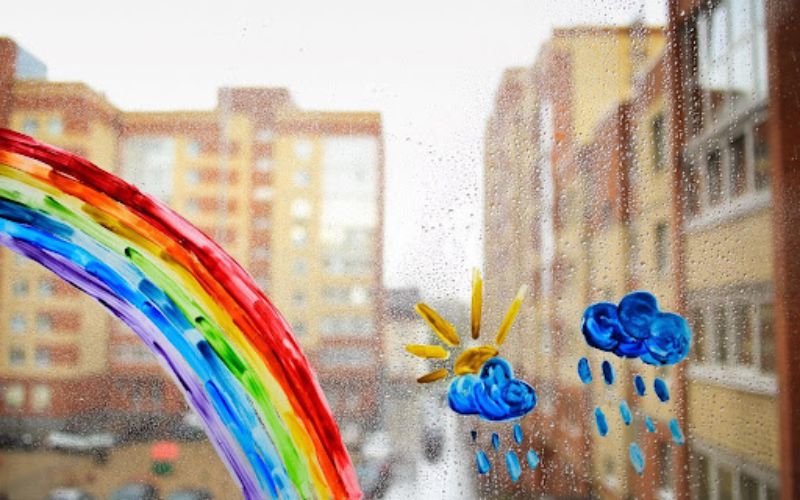A Guide To Painting On Plexiglass - Tips And Ideas!

Colors have a positive impact on mood. It instantly uplifts your spirit and sparks the vibrance of creativity into your dull day. Different types of colors and painting techniques make this activity even more exciting. Painting on transparent canvas further elevates the experience.
Plexiglass is typically used for painting purposes. It is transparent, durable, and shatterproof. All these qualities make plexiglass an incredibly amazing option for painting. It is even kid-friendly. You can get your kids to paint on plexiglass sheets without worrying about them getting hurt. So let's discover some effective tips for painting on plexiglass.
How to Paint on Plexiglass
Like any other DIY project, you need to prepare the plexiglass sheet for painting purposes. Here is what you will need to proceed:
- Sandpaper
- Sponge
- Soap and water
- Acrylic primer
- Acrylic paint
- Paint Brushes
- Acrylic or Plexiglass sheet
- Some old newspapers
- Waterproof sealant
1. Preparing the Surface

Plexiglass sheets are incredibly smooth that you need to roughen the surface in order to get it ready for painting. Use sandpaper for this purpose. Softly rub the plexiglass surface with the sandpaper. Make sure to sand the entire surface of the acrylic sheet or the paint won't adhere well to the surface.
After sanding the plexiglass sheet, you’ll need to clean it up. Take a dry sponge first and remove the plexiglass particles from the surface. Follow this step by cleaning the plexiglass surface with a soap and water solution. Use lint-free cloth for this cleaning purpose. Leave the sheet to dry afterward.
2. Putting the Primer
It's important to prime the plexiglass surface before painting. The primer helps create a nice sticky surface for the paint to adhere to.
For the spray primer, shake the bottle first and then apply the primer on the surface from a suitable distance. Make sure to uniformly distribute the liquid primer over the surface. Apply one coat to the surface and let it dry.
Sometimes the plexiglass surface is not completely smooth, thus additional coats of primer are required to set the surface for painting. Spray on the second coat of primer only after the first coat has completely dried.
The required primer coats also depend on the type of primer you are using. Make sure to check the manufacturer's instructions to specify the number of coats.
3. Paint and Have Fun!

After the primer is dry, your canvas is all set for the paint action. If you are using spray paints, make sure to shake them well before use and hold the nozzle at a 45-degree angle and at least 8 inches away from the sheet.
Note the opacity of the paint. If one layer of color is not dark enough, you may have to apply multiple layers of paint. Choose the paint coats according to your desired opacity. For brush painting, you can choose any colors and just add the strokes of paint to the acrylic sheet canvas.
You can also create a base color by spray painting and then elevate it by painting any illustration with brush strokes on it. You can also take the abstract route just by adding different colors to the canvas. Make sure to wait for the paint to dry before adding the next layer or stroke to avoid smudging.
4. Apply the Waterproof Sealant
Waterproof sealant is a transparent seal that adds a layer of protection to the painting. It keeps the paint in place and helps enhance the durability of the painting. The sealant also prevents discoloration if you want to display the painting outdoors.
Applying a sealant is a totally optional step and it depends on your use. If you intend to showcase your painting, it's recommended to add sealant to the surface. Take a good commercial sealant and add a coat of the sealant to your artwork. Apply at least one layer. You can add another layer of sealant if needed.
The sealant keeps the paint from getting in direct contact with harmful environmental factors and keeps your masterpiece shining for years.
Pro Tips For Painting On Plexiglass
Here are some additional tips for painting on plexiglass like a pro.
- Water-based paints are better for use on acrylic surfaces than solvent-based paints. So go for water-based acrylic paints.
- Make sure to note the drying time of the paint. It may vary depending on the type of paint you are using.
- Use masking tape to create straight lines and even partitions in your painting.
- Use a clear polyurethane-based sealant to achieve a glossy and smooth appearance.
Conclusion
Painting on Plexiglass is a great experience. The colors spread over clear sheets add a unique wow factor to the painting attempt.
You don't need to especially prepare the plexiglass sheets for painting. Just take the plexiglass sheet, draw the outline of the preferred design, or go with an abstract style and create a masterpiece. You can also display your painting on plexiglass as a DIY decor element. So go ahead and refine your inner artist!
